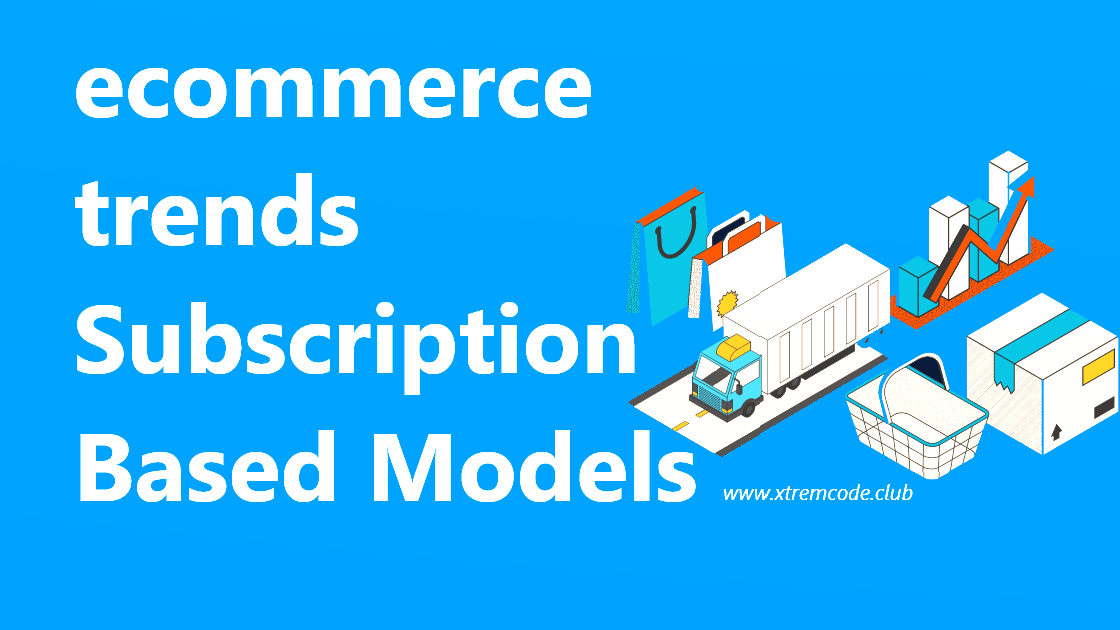Introduction
In the ever-expanding realm of online commerce, keeping up with the latest e-commerce trends is essential for businesses looking to stay competitive and meet the ever-changing demands of consumers. E-commerce trends are not static; they continually evolve in response to shifts in technology, consumer behavior, and market dynamics. In this article, we will explore some of the most prominent e-commerce trends shaping the industry as of 2023.Mobile Commerce (M-Commerce)
Mobile commerce is no longer just a trend; it's a dominant force in the e-commerce landscape. With the proliferation of smartphones and the growing preference for mobile shopping, businesses have invested heavily in creating mobile-responsive websites and user-friendly apps. The trend towards a seamless, mobile-optimized shopping experience is expected to continue, making it imperative for e-commerce businesses to prioritize mobile functionality.Personalization and Customer Experience
The modern consumer expects a highly personalized shopping experience. E-commerce platforms are increasingly implementing AI-driven recommendation engines, predictive analytics, and chatbots to offer tailored product suggestions and real-time customer support. Personalization enhances user engagement and boosts conversion rates, helping businesses stand out in the crowded e-commerce space.Augmented Reality (AR) and Virtual Reality (VR)
AR and VR technologies are revolutionizing the way consumers interact with products online. These immersive technologies enable customers to visualize products in their own environments before making a purchase decision. This trend is especially significant for industries like fashion, furniture, and home decor, where the ability to try before buying is a game-changer.
Sustainability and Ethical Practices
Consumers are decreasingly conscious of the environmental and ethical impact of their purchases. As a result, e-commerce brands are focusing on sustainability, ethical sourcing, and responsible manufacturing processes. Businesses that prioritize eco-friendly and socially responsible practices are not only meeting customer expectations but also contributing to a positive public image.Voice Commerce
Voice-activated devices like smart speakers and digital assistants have gained popularity, opening up a new frontier for e-commerce. Voice commerce allows consumers to make purchases, check product availability, and inquire about order statuses using voice commands. To stay competitive, e-commerce businesses are optimizing their platforms for voice search and transactions.Subscription-Based Models
Social Commerce
Social media platforms have become essential tools for e-commerce. The integration of shopping features into platforms like Instagram, Facebook, and Pinterest has given rise to social commerce. Consumers can discover and purchase products without leaving their favorite social apps. Businesses that harness the power of social commerce effectively can reach wider audiences and drive sales.Cryptocurrency and Blockchain
Cryptocurrency adoption is making its way into e-commerce, with several major brands and platforms now accepting digital currencies as payment. Blockchain technology is being used to enhance transparency and security in supply chains, reducing the risk of fraud and counterfeiting. These technologies offer potential benefits to both businesses and consumers in the e-commerce space.Conclusion
Thee-commerce assiduity is in a state of constant elaboration. To remain competitive and meet the ever-changing needs of consumers, e-commerce businesses must stay attuned to the latest trends and technologies. Mobile commerce, personalization, AR/VR, sustainability, voice commerce, subscription models, social commerce, and blockchain are all factors shaping the e-commerce landscape in 2023. Adapting to these trends and harnessing their potential will be key to success in the digital marketplace. As we move forward, expect further innovations and trends to redefine the e-commerce landscape in exciting and unexpected ways.
Labels:
business services


